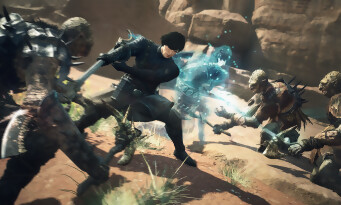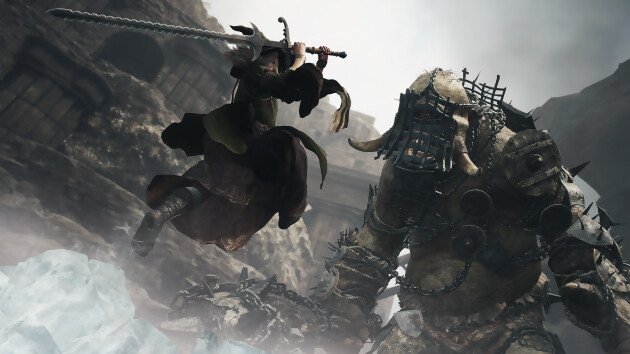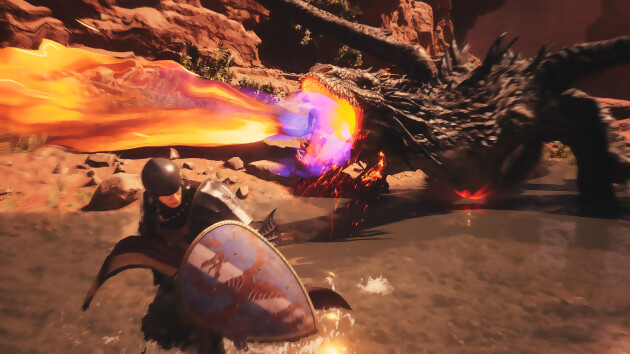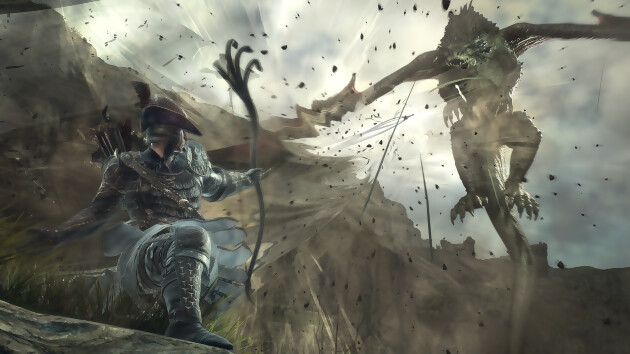There are 3 big games coming out on March 22, 2024. Rise of the Ronin (Sony’s next exclusive for its PS5), Princess Peach Showtime for fans of platformers and who play on Nintendo Switch and finally Dragon’s Dogma 2, the Capcom game which arrives after 12 years of waiting! These are 3 games released on the same day, a classic in video games, since the fiscal year ends on March 31, which can create a traffic jam, although they are each aimed at a different audience. Today we’re going to talk about Dragon’s Dogma 2, because we had the opportunity to test the game again for several hours. This is the final version of the title that allowed us to experience new things compared to the Tokyo Game Show 2023 demo six months ago. Besides, you may have heard some negative feedback about the game, but we want to reassure you, this sequel still looks promising. Everything won’t be perfect of course, but we’re likely to eat well all the same…
A lot has been said and shown in recent months around Dragon’s Dogma 2, so I’m going to focus on new elements in this video. The first thing that struck me during my 2nd hands-on was the open world in which we will evolve. Of course, we are used to open worlds, their structures, their mechanics and the way in which quests are assigned, but if there is one thing that I appreciated in the open world of Dragon’s Dogma 2, it is is its topography and this almost organic aspect that emerges from it. No marker, no marked path, a sober, refined interface, and finally a map that reveals itself as you explore, it’s a change from open worlds where you take the player by the hand and indicate to them a whole bunch of additional activities, often useless, to do. The last game to date that had an archaic and borderline has-been structure was Final Fantasy VII Rebirth.
Clearly, with Dragon’s Dogma 2, Capcom wanted to break away from the old proven formulas and be a little more up-to-date, perhaps even if it meant destabilizing players. A bit like Ubisoft’s Avatar which released the player into the lush nature of Pandora, here you will have to learn to explore the open world. Do not hesitate to take paths that seem inaccessible, because clearly, it is almost possible to go anywhere. By blurring the lines a little, no pun intended, Capcom makes exploration more natural, more organic too and therefore more interesting. On the other hand, you will have to manage the endurance gauge, which may perhaps annoy more than one person. Like Zelda Breath of the Wild or Tears of the Kingdom, our character will not be able to sprint as he wants, nor even cling to enemies infinitely, since everything is managed and limited by this stamina gauge which is the keystone of the gameplay. We imagine that it will be possible to make it evolve over the course of the adventure, but we already know that this feature will also create a lot of frustration among certain players. We’ll see when it comes out.
In the meantime, since the open world aims to be less interventionist, without the slightest indication, we were able to test it on a full-scale basis with one of the missions which called upon our sense of observation, coupled with a little gumption. At one point, we were asked to go to a region, that of Battahl, which was inaccessible without carrying a pass. Small problem, only Leonin are authorized to cross the barrier to go to this region. There are then several ways around the problem, but it is up to the player to scan the surroundings to find the way to be accepted. You will clearly spend time finding a solution, but if you are a little nosy and observant, you can either hide in a cart to escape the vigilance of the guards, or go to a specific shop in the village to buy a Leonin mask and impersonation. Likewise, in another mission, the rescue of a young boy for example, you have to find the right NPC to talk with to get clues as to the missing person’s whereabouts. An NPC who wanders around the city and who will take you several minutes to find. From this, we can deduce that each conversation with an NPC is important, knowing that some will come directly to approach you, then directly opening a discussion. In this way, we will either find information to advance in the missions, obtain new quests, or simply find our way. We are aware that leaving the player completely free, or even lost, risks not pleasing everyone, and we saw this clearly with Ubisoft’s Avatar game. Obviously, after 20 years of open world taking the player by the hand, it’s not easy to walk without crutches… But we will eventually get there, we don’t doubt it for a second.
Along the same lines, fast travel in Dragon’s Dogma 2 has been limited, again to promote exploration and the organic aspect of the open world. It will therefore not be possible to go from point A to point B as easily as unlocking fast travel points like any standard open world. No, a simple stroll in the open world of Dragon’s Dogma 2 must be a test, even a survival mission and is an integral part of the experience. Because on the way, we will always encounter a group of trolls, wolves or even a cyclops and each confrontation must be able to shape our gaming experience. This is the reason why Hideaki Itsuno, the game director of game, decided to keep the same feature from the first Dragon’s Dogma which did not please everyone. It will therefore only be possible to place a single beacon in a chosen location on the map, which will also have to be activated using a magic stone. If you are missing the stone in question, the teleportation will not be possible. Some will see it as a regression, others will understand this choice of game design, quite consistent with Capcom’s organic vision. The Japanese publisher in no way wants to make the task easier for the player and the ferocity of the enemies, even the most banal, is proof that the tough difficulty of the game is also part of Capcom’s desire to surprise, not to say abuse the game. player. This is where you will have to learn to master all the skills of your character, obviously chosen according to their class. Between the weapons, the magic spells, the powers, and this possibility of clinging to any slightly imposing enemy, we find in the gameplay of Dragon’s Dogma 2 a bit of Zelda, a bit of Elden Ring, and also Shadow of the Colossus.
Likewise, the management of your team will be essential and here again, you will have to recruit the pawns who will allow you to advance calmly in the adventure. Everything must be done in a balanced manner, because confrontations can never be done solo, otherwise the 4 irons will end up in the air quickly. This is all the more true as the difficulty changes depending on the time of day. At night, for example, you encounter different enemies, often more aggressive, knowing that visibility is reduced, if not absent, if you don’t have a fire with you. Promising in its open world and its gameplay, provided you accept the proposal, Dragon’s Dogma 2 also has good arguments in terms of graphics. The game is generally attractive, with a solid Japan/West DA. It hasn’t changed since the last time we saw the game, and we hope that the open world will offer biomes varied enough to take us on a journey. On the other hand, disappointment regarding the technique. During our gaming session on PS5, we saw that the game was sticking its tongue out quite a bit, with big drops in frame rate during certain passages, especially when big, imposing enemies arrive without warning. Despite its expertise and mastery of its in-house engine, the RE Engine, Capcom perhaps needs more powerful hardware to run its game.



